งานฝีมือตู้ครัว รูปทรงที่ลงตัวทั้งฟังก์ชันและสไตล์ การรู้วิธีการก่อสร้างจะช่วยให้คุณเลือกตู้ที่ใช้งานได้ยาวนาน นี่คือเทคนิคหลักๆ:
ไม้เนื้อแข็ง
ผลิตจากไม้เนื้อแข็ง/ไม้เนื้ออ่อนชิ้นเดียว แสดงให้เห็นลายไม้ธรรมชาติ
ข้อดี: เหนือกาลเวลา ทนทาน และสามารถตกแต่งใหม่ได้
ข้อเสีย: ราคาแพง, บิดเบี้ยวเพราะความชื้น, หนัก
เหมาะที่สุดสำหรับ: ห้องครัวแบบดั้งเดิม/เรียบง่ายที่ให้ความสำคัญกับรูปลักษณ์ที่เป็นธรรมชาติ
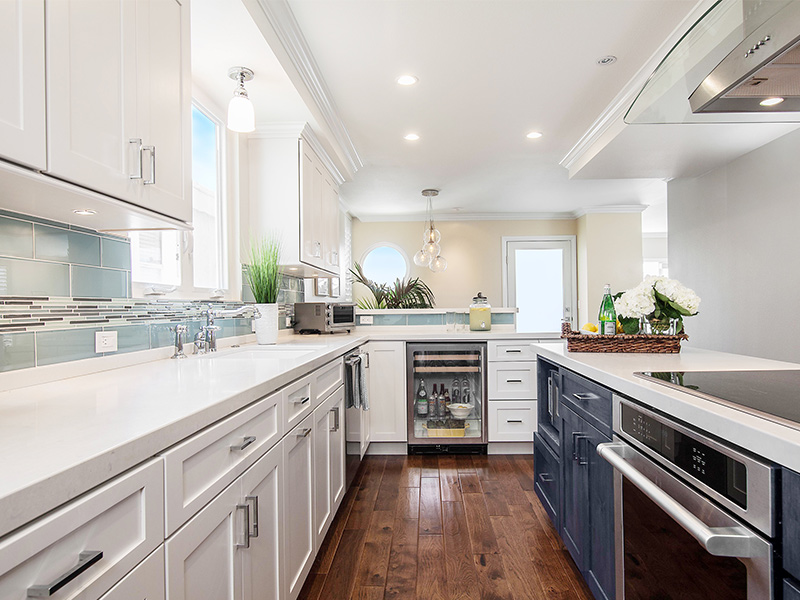
ไม้แปรรูป (วีเนียร์)
แกนไม้อัด/MDF เคลือบไม้จริงบาง
ข้อดี: ราคาไม่แพง มีเสถียรภาพ ทนต่อการบิดเบี้ยว
ข้อเสีย: แผ่นไม้อัดแตกง่าย ซ่อมแซมยาก
เหมาะที่สุดสำหรับ: ผู้ซื้อที่มีงบจำกัด พื้นที่ชื้น
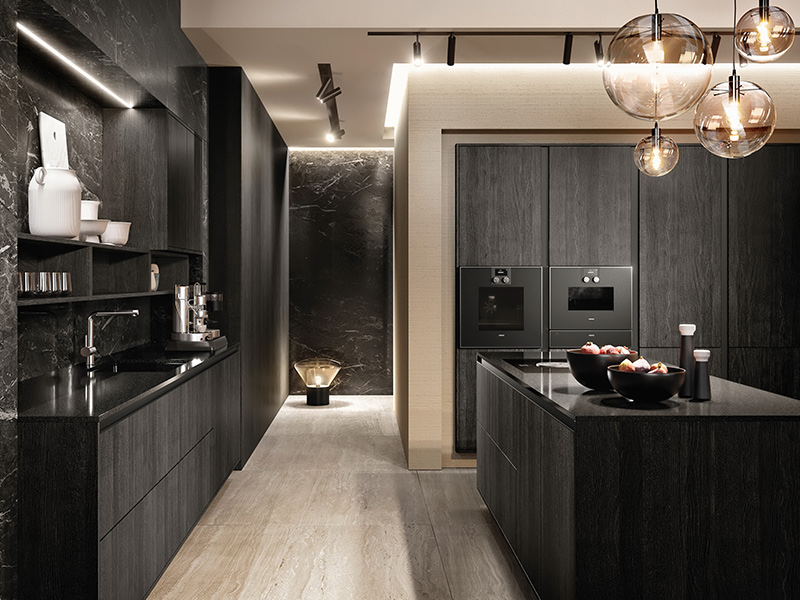
เคลือบเมลามีน
ไม้ปาร์ติเคิลบอร์ด/MDF ผสมเรซินเมลามีน (สีเลียนแบบไม้)
ข้อดี: ราคาถูก ดูแลรักษาง่าย ทนต่อคราบ
ข้อเสีย: ขอบบิ่น ซ่อมยาก
เหมาะที่สุดสำหรับ: การเช่า ห้องครัวที่ยุ่งวุ่นวาย
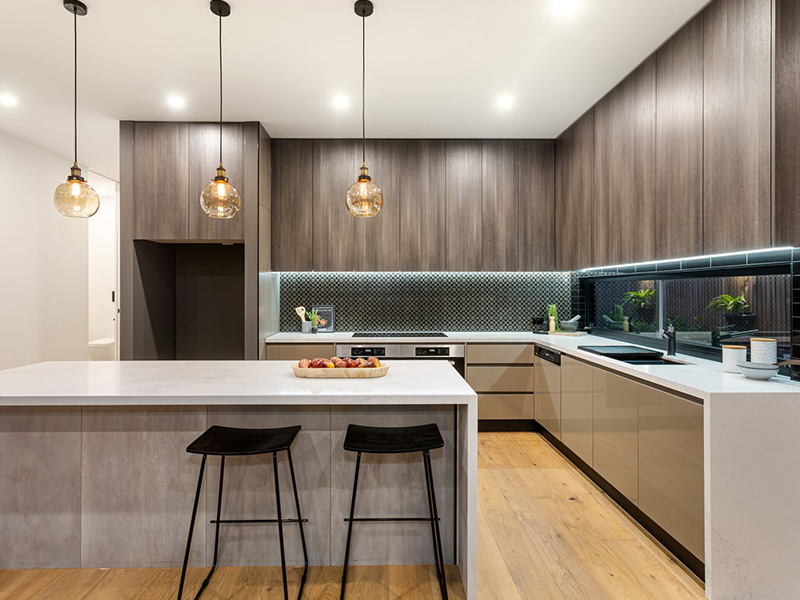
เทอร์โมฟอยล์ PVC
ฟิล์มไวนิลบนแผ่น MDF (รีดร้อน ไร้รอยต่อ)
ข้อดี: ราคาไม่แพง ทันสมัย ทนความชื้น
ข้อเสีย: ลอกใกล้ความร้อน ซ่อมแซมยาก
เหมาะที่สุดสำหรับ: ห้องครัวแบบมินิมอล (หลีกเลี่ยงแหล่งความร้อน)
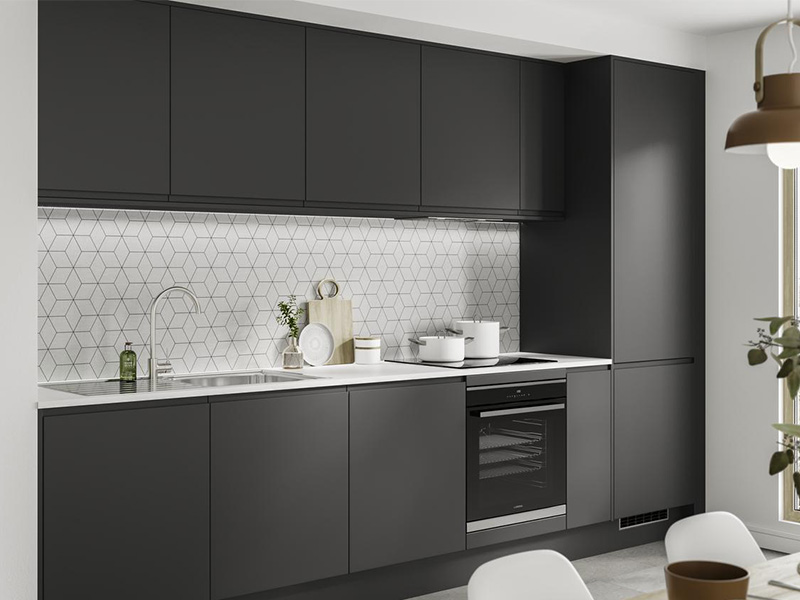
สัตว์เลี้ยง
ผลิตจากฟิล์ม PET (โพลีเอทิลีนเทเรฟทาเลต) ที่เคลือบบนแผ่น MDF หรือไม้อัด
ข้อดี: มีความเงางามสูง ทนต่อรอยขีดข่วน ทำความสะอาดง่าย ทนความร้อนได้ดีกว่าเทอร์โมฟอยล์
ข้อเสีย: มีราคาแพงกว่าเมลามีน/เทอร์โมฟอยล์ มีตัวเลือกสีจำกัด
ดีที่สุดสำหรับ: ห้องครัวสมัยใหม่ ต้องการพื้นผิวที่เรียบเนียนและทนทาน
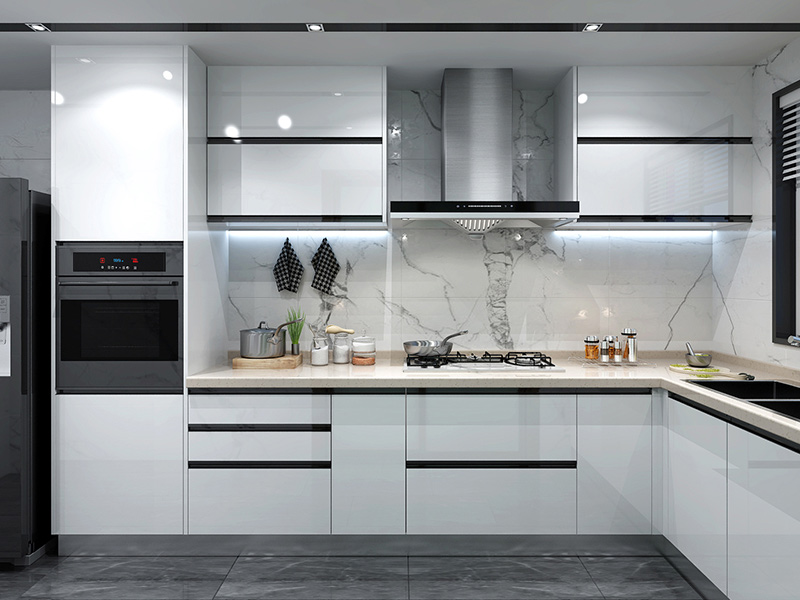
ยาลิก มีประสบการณ์มากกว่า 20 ปีใน การออกแบบตู้ครัว และการผลิต โดยนักออกแบบมืออาชีพและเวิร์คช็อปสองแห่ง ยินดีต้อนรับคำถามของคุณ